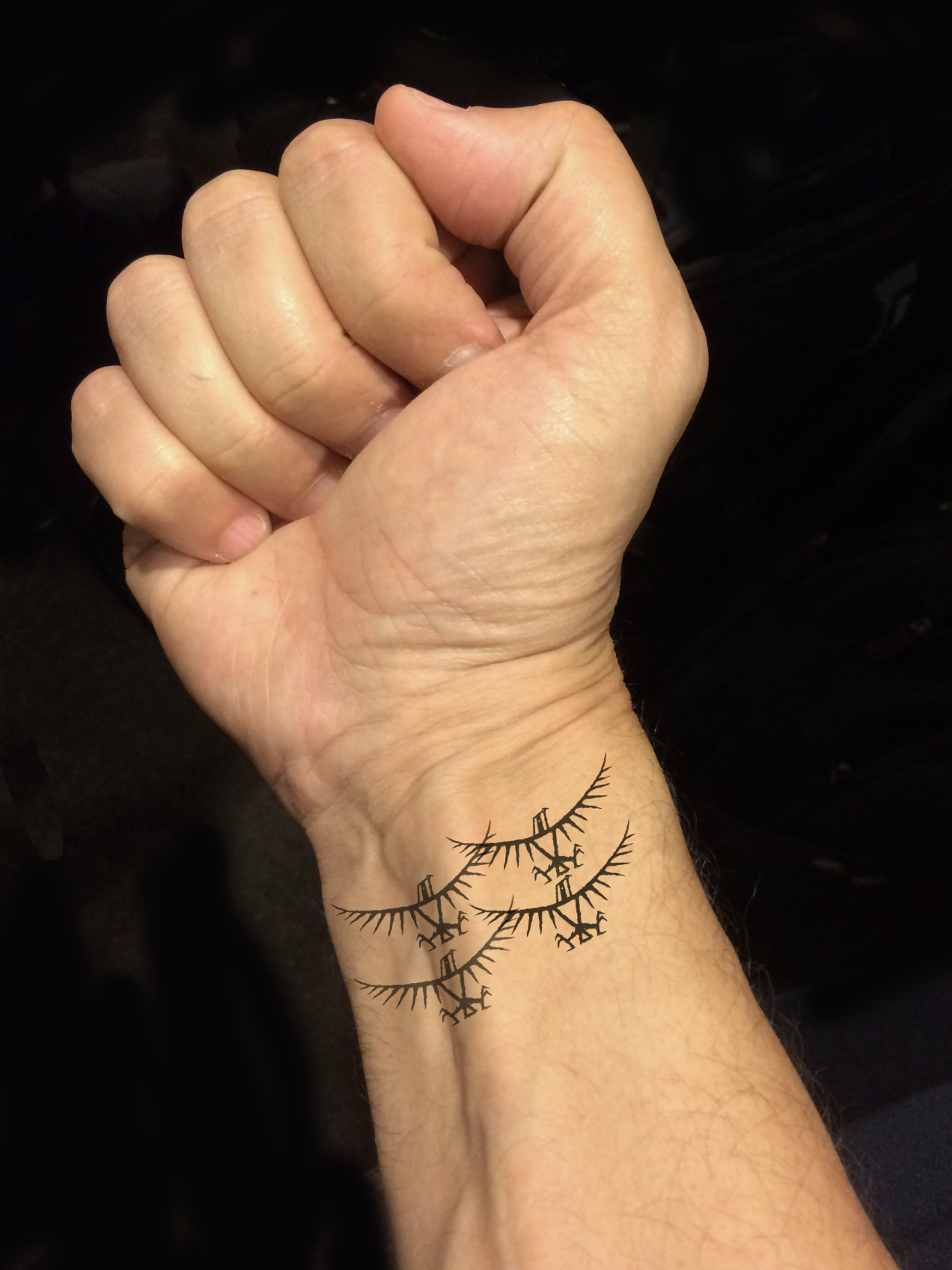Government Covers Up Resistance Fighter Tattoos
By Akuma Kalea
Archaeologists from the Rilao Advance Research Center yesterday discovered a rudimentary branding device believed to cover the Nali tattoos of the 1930s Plague Doctor Resistance movement.
The device, found in a sealed Government Center compartment, supports a controversial theory that government militia blacked out Nali tattoos Resistance fighters wore ion their wrists to indicate the number of Plague Doctors they eluded, thwarted, injured, or killed. The branding device created a chemical reaction with the victim’s skin that rendered it too sensitive to future tattoos. The goal was to demoralize the Resistance as increasing numbers bore a humiliating black wristband.
“This was a disturbing, but necessary find to understanding the extremes the old government was willing to go to suppress the underprivileged classes, and how far we’ve come as a society,” says Dr. Radi Moreno, professor of Plague Era Artefacts at the Center.
Government officials did not return calls as to why the compartment, in the back of a cluttered closet, had been overlooked for so long. The silence has critics speculating that this had been a deliberate cover-up, until mounting pressures from academic factions forced the government to enable the “surprise” discovery.
Collaborators
Susan Karlin, Habib Zargarpour









